Upper Control Arm Replacement Rear Wheel Drive
Removal Procedure
Tools Required
J 23742 Ball Joint Separator
- Raise the vehicle. Refer to Lifting and Jacking the Vehicle in General Information.
- Remove the tire and wheel assembly. Refer to Wheel Removal in Tires and Wheels.
- Remove the cotter pin and the nut.
- Disconnect the steering knuckle from the upper ball joint. Use the J 23742 in order to break the ball joint from the steering knuckle.
- Remove the nuts and the shims.
- Remove the bolts. Lift the upper control arm in order to gain access to the bolts.
- Remove the upper control arm.
Caution: Floor jack must remain under the lower control arm during removal and installation to retain the lower control arm in position. Failure to do so could result in personal injury.
Important: Note the location of the alignment shims. Replace the shims in the same location from which these were removed.
| • | Position the safety stands between the lower control arm spring seat and the lower ball joint. |
| • | Place a floor jack under the lower control arm spring seat. |

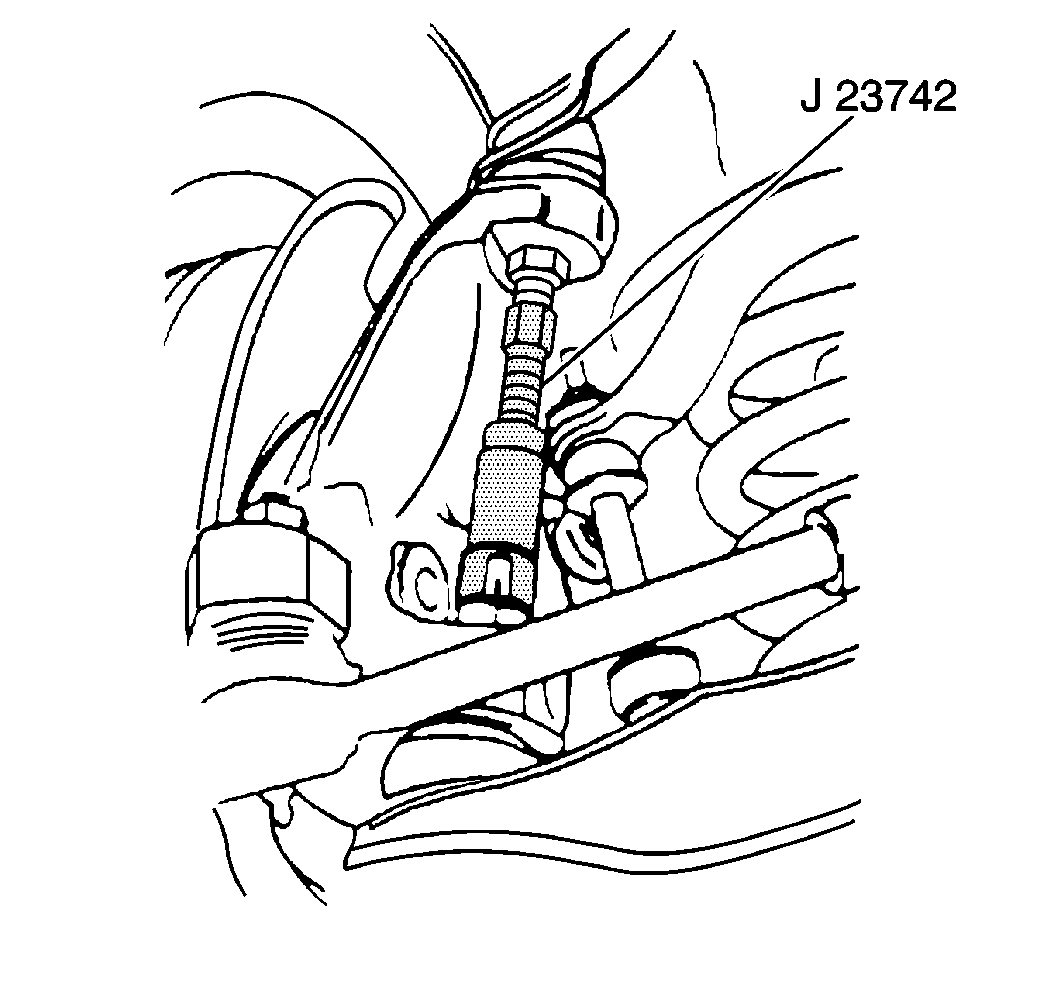
| • | Lift the upper control arm in order to free the control arm from the steering knuckle. |
| • | Support the steering knuckle/hub assembly in order to prevent the knuckle weight from damaging the brake hose. |
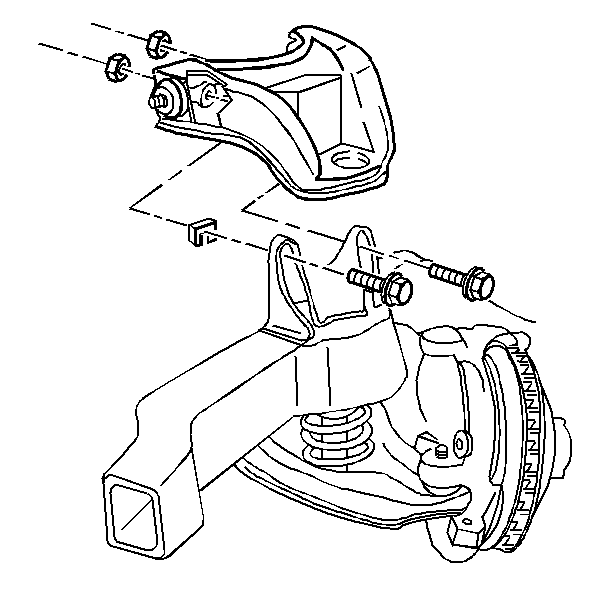
Installation Procedure
- Install the upper control arm to the frame. Line up the holes in the shaft with the holes in the frame.
- Install the shims, the bolts, and the nuts. Lift the upper control in order to gain access.
- Tighten the nut on the thinner shim pack first.
- Tighten the nuts to 110 N·m (81 lb ft).
- Connect the upper ball joint to the steering knuckle. Make sure the ball joint is fully seated into the steering knuckle.
- Install the nut.
- Install a new cotter pin. Tighten the nut up to an additional 1/6 amount in order to insert the cotter pin through the upper ball joint stud. Bend the cotter pin ends flat against the nut.
- Install the tire and wheel assembly. Refer to Wheel Installation in Tires and Wheels.
- Remove the floor jack from under the lower control arm.
- Lower the vehicle.
- Check the front wheel alignment. Refer to Wheel Alignment Specifications in Wheel Alignment.

Notice: Use the correct fastener in the correct location. Replacement fasteners must be the correct part number for that application. Fasteners requiring replacement or fasteners requiring the use of thread locking compound or sealant are identified in the service procedure. Do not use paints, lubricants, or corrosion inhibitors on fasteners or fastener joint surfaces unless specified. These coatings affect fastener torque and joint clamping force and may damage the fastener. Use the correct tightening sequence and specifications when installing fasteners in order to avoid damage to parts and systems.
Important: Mount the shims exactly as they were when removed.
Tighten

Tighten
Tighten the nut to 85 N·m (65 lb ft).
Upper Control Arm Replacement Full-Time Four-Wheel Drive
Removal Procedure
- Raise the vehicle. Lifting and Jacking the Vehicle in General Information.
- Remove the tire and wheel assembly. Refer to Wheel Removal in Tires and Wheels.
- Disconnect the brake hose from the upper control arm. Tie the hose out of the way.
- Remove the brake hose bracket.
- Remove the speed sensor bracket.
- Remove the cotter pin.
- Remove the nut.
- Disconnect the upper ball joint from the knuckle. Refer to Upper Control Arm Ball Joint Replacement .
- Remove the cam hardware nuts, the cams, and the bolts.
- Remove the upper control arm.
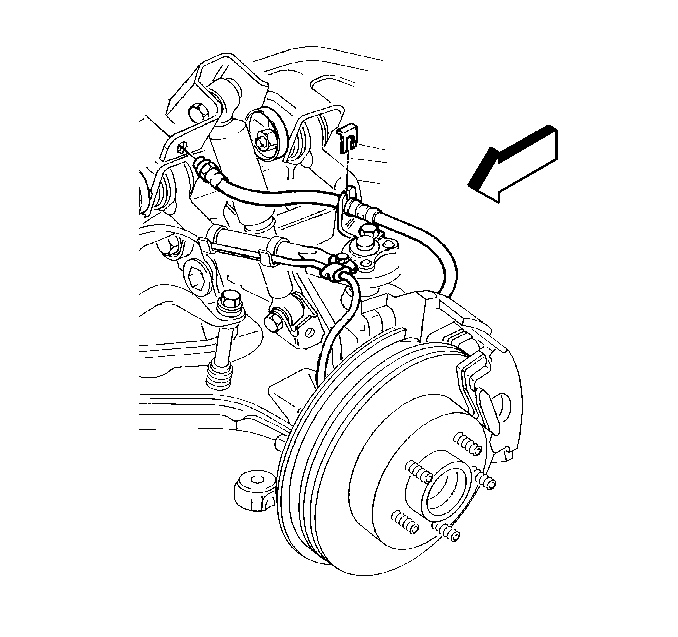
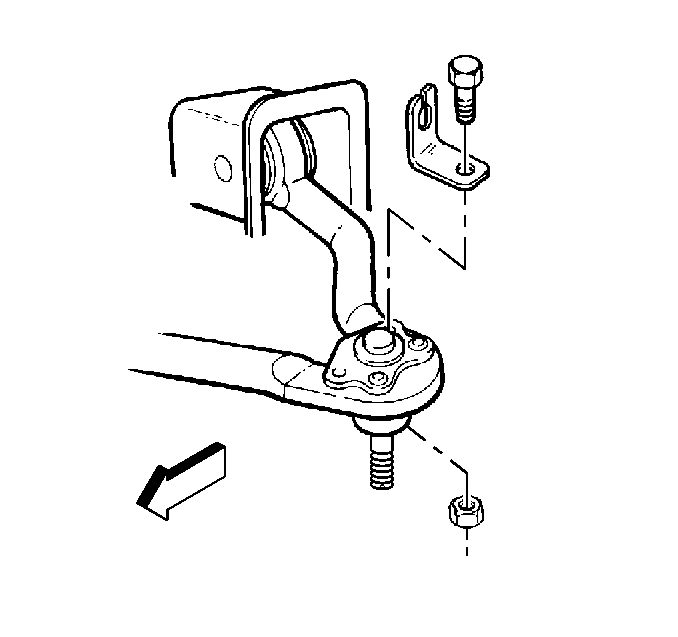

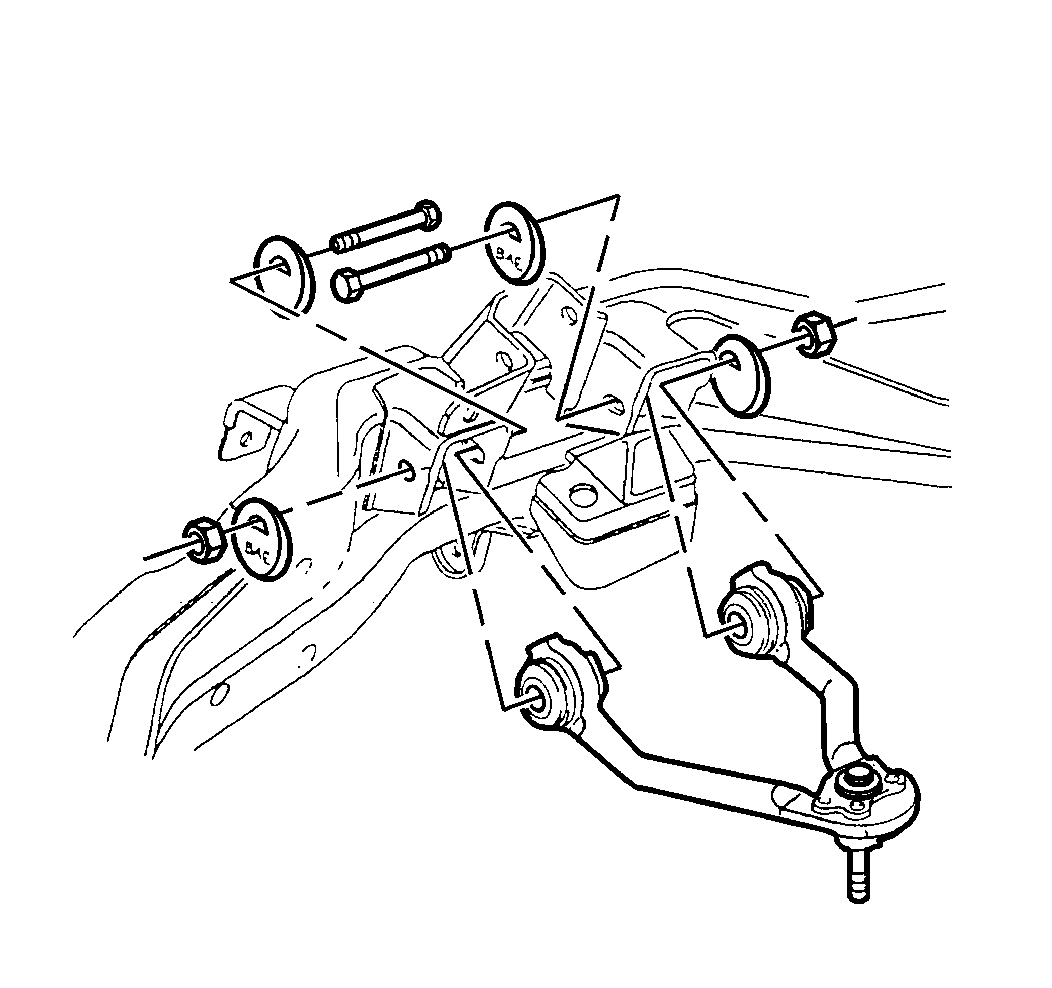
Installation Procedure
- Install the upper control arm to the frame.
- Install the cam hardware bolts, the cams and the new nuts.
- Connect the upper ball joint stud to the knuckle.
- Install the nut.
- Install a new cotter pin. Tighten the nut up to an additional 1/6 amount in order to insert the cotter pin through the upper ball joint stud. Bend the cotter pin ends flat against the nut.
- Install the brake hose bracket.
- Install the speed sensor bracket.
- Connect the brake hose.
- Install the tire and wheel assembly. Refer to Wheel Installation in Tires and Wheels.
- Lower the vehicle.
- Tighten the upper control arm nuts.
- Tighten the front upper control arm nut first, then the rear upper control arm nut.
- Tighten the nuts to 123 N·m (91 lb ft).
- Tighten the nuts with the control arm at Z height. Refer to Trim Height in Suspension General Diagnosis.
- Align the front wheels. Refer to Wheel Alignment Specifications in Wheel Alignment.

| • | Make sure the bolt heads are opposed inside the bracket. |
| • | The cam lobes must point down. |
| • | Do not torque the nuts at this time. |
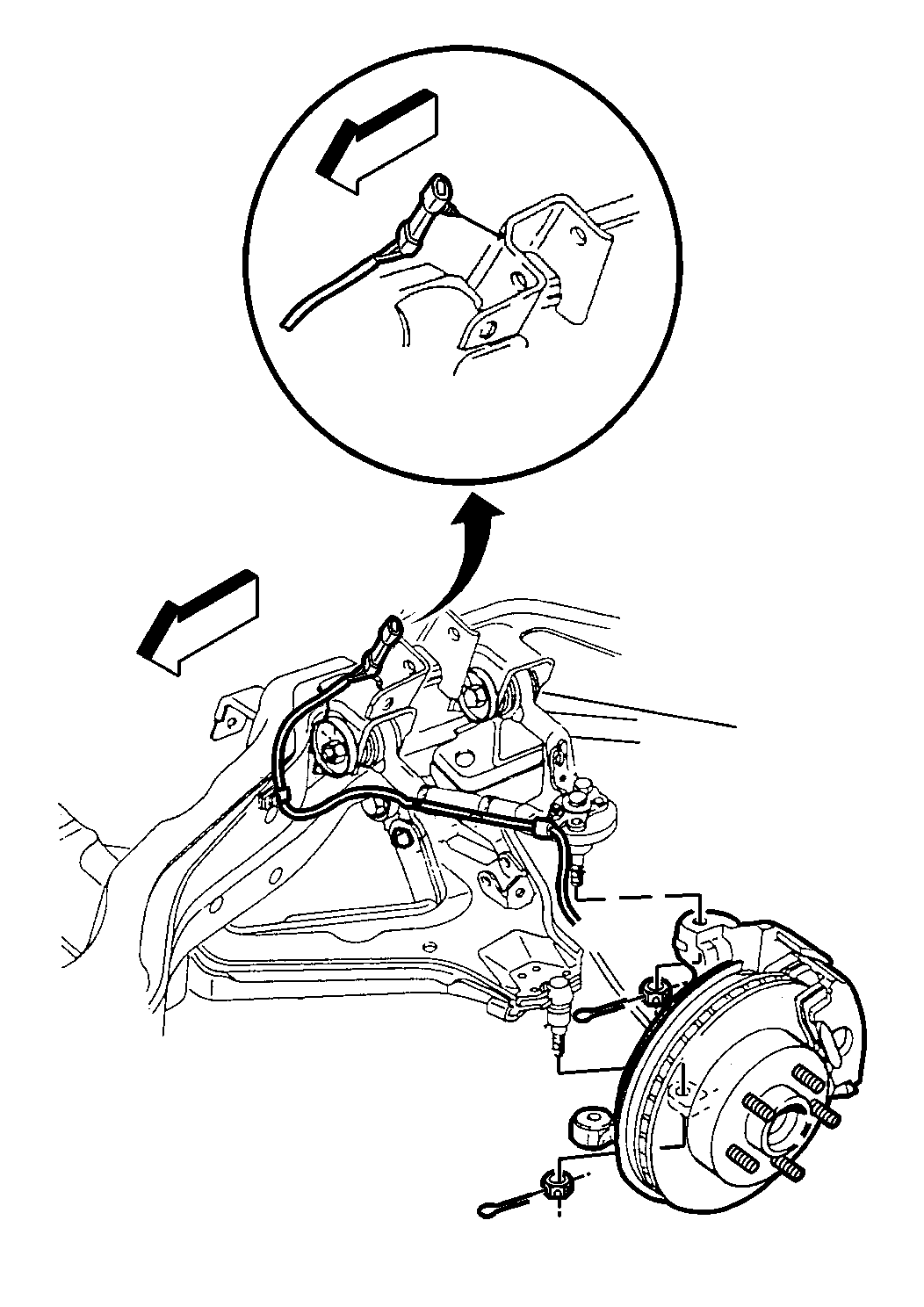
Notice: Use the correct fastener in the correct location. Replacement fasteners must be the correct part number for that application. Fasteners requiring replacement or fasteners requiring the use of thread locking compound or sealant are identified in the service procedure. Do not use paints, lubricants, or corrosion inhibitors on fasteners or fastener joint surfaces unless specified. These coatings affect fastener torque and joint clamping force and may damage the fastener. Use the correct tightening sequence and specifications when installing fasteners in order to avoid damage to parts and systems.
Tighten
Tighten the nut to 90 N·m (66 lb ft).


Tighten
Tighten the brake hose and the speed sensor nuts to 16 N·m
(12 lb ft).

Tighten
